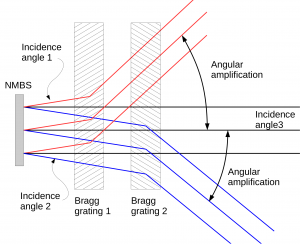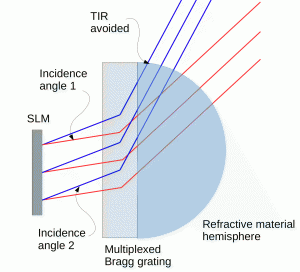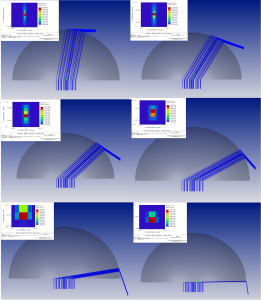Non-mechanical beam Scanner
Abstract
Spatial light modulators (SLM) and optical phase delay arrays (OPDA) are particularly interesting for light beam steering since they are a non mechanical way of achieve this function. As such, they are not prone to mechanical failure due to fatigue, they are faster, lighter, and more compact than other techniques. These advantages make SLM/OPDA attractive for applications such as optical switching, free space optical communication, and LIDAR.
However, the maximum diffraction angle that can be achieved by an SLM/OPDA, is governed by Bragg’s law, and is limited to a few degrees given the current pixel pitch (4µm pitch at 1550nm = 5.5° angle). For some applications such as FSO, or LIDAR, this angle is not large enough. The angle is even smaller when using the more efficient blazed grating configuration that uses more pixels to define their saw-tooth profile.
To keep the form factor very compact, and to achieve 2π steradian coverage, we have devised a solution based on multiplexed volume holograms. Volume, or Bragg, hologram are permanent diffractive structures that are highly selective according to the light incidence angle. Volume holograms diffract the light that is incident at a very specific angle (pre-defined), but let the light coming at other angles passing through unaffected.
Adding a hemispherical lens to the system can even increase the coverage up to 4π steradian.
Publications
- P.-A. Blanche, at al., “Holography for Automotive Applications: from HUD to LIDAR”, Invited paper, SPIE proceedings 10757-11, Optics & Photonics, San Diego, August 2018.
- P.-A. Blanche “Expansion of angular distribution of a light beam to cover up to 4pi steradian”. Patent application.
Pictures



